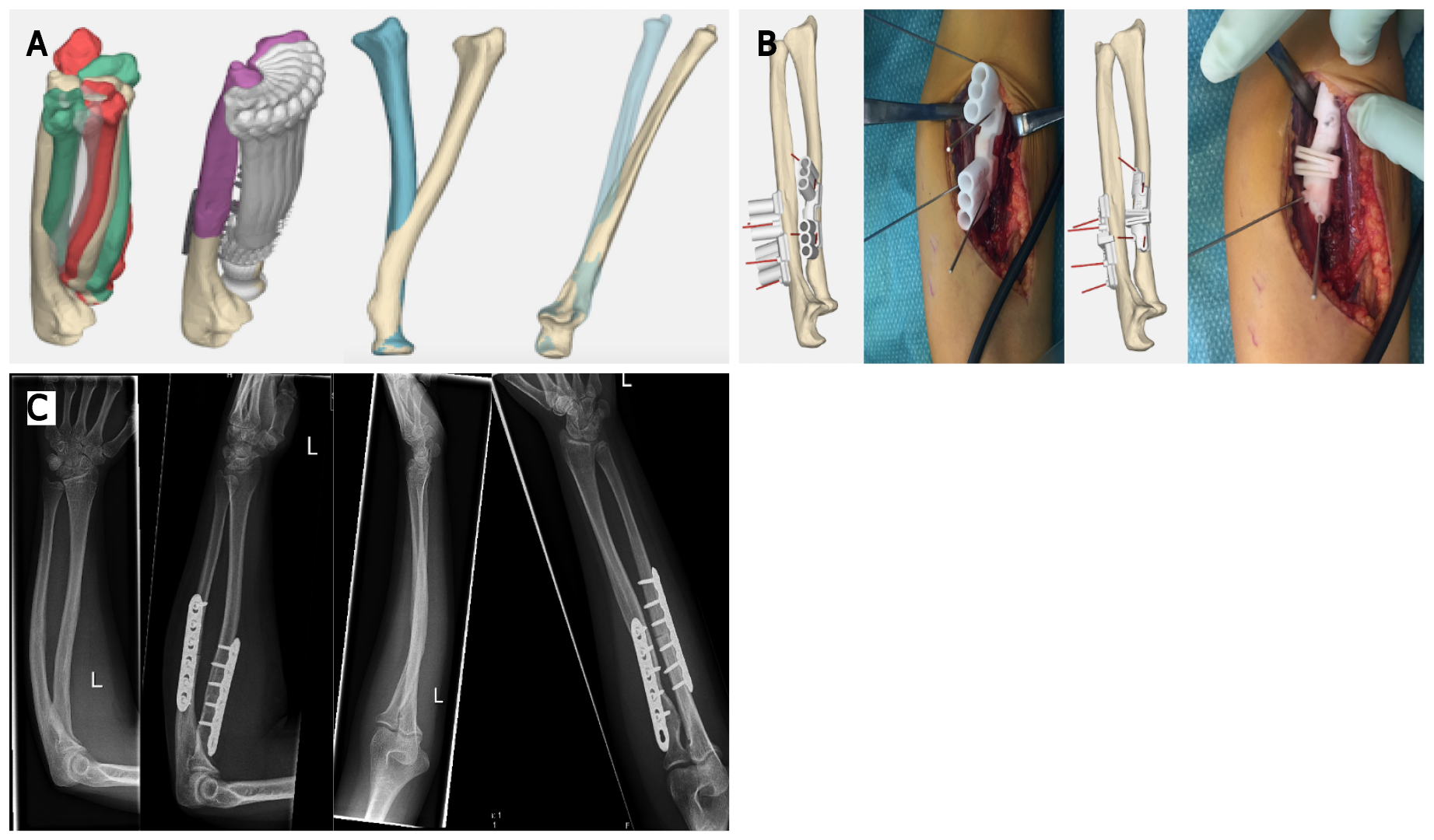Copyright
©The Author(s) 2022.
Figure 2 Three-dimensional-printed guides in posttraumatic rotational impairment of the forearm.
This patient suffered from a decreased rotational range of motion due to malunion after a forearm fracture. The three-dimensional (3D) deformity in both bones of the forearm was assessed with 3D analysis. During this analysis the optimal planes of correction were determined, and potential gains were calculated with simulation of rotation of the forearm comparing the preoperative and postoperative situation. Patient-specific guides to perform the desired osteotomies with predrilling of the screw holes for the radius and ulna are shown here. The surgical procedure was completed as planned and resulted in a vast improvement in range of motion. A: Preoperative planning; B: Intraoperative use of 3D-printed patient specific guides; C: Preoperative and postoperative radiographs, showing correction of the flexion deformity of the ulna to an ulna with a normalized proximal ulna dorsal angulation, as well as correction of an S-shaped radial shaft to a normalized bowing configuration of the radial shaft.
- Citation: Goetstouwers S, Kempink D, The B, Eygendaal D, van Oirschot B, van Bergen CJ. Three-dimensional printing in paediatric orthopaedic surgery. World J Orthop 2022; 13(1): 1-10
- URL: https://www.wjgnet.com/2218-5836/full/v13/i1/1.htm
- DOI: https://dx.doi.org/10.5312/wjo.v13.i1.1









